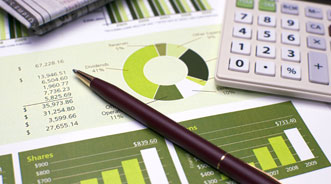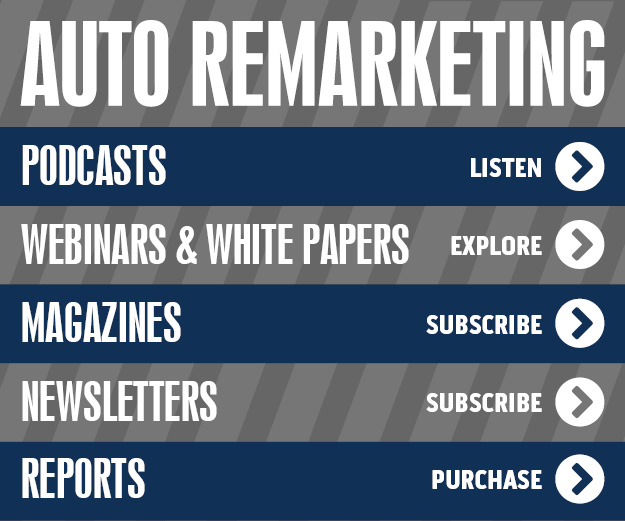CNW: Rise of July Private-Party Sales Hurt Independent Dealer Results

July used-vehicle sales data from CNW Research showed why it can be challenging for an independent dealer nowadays.
Not only are franchised stores holding on to as many trade-ins as they possibly can retail, CNW president Art Spinella explained why independent lots also are being pinched by private-party sales.
Overall, last month’s used-sales volume moved higher by more than 100,000 units to eclipse 4.6 million sales. CNW indicated the used-sales figure from last July was slightly less than 4.5 million units.
As franchised dealers enjoyed more retail-sales volume thanks to trade-ins from turning new vehicles, Spinella believes the year-over-year decline from independent dealers of more than 150,000 units can be directly tied to a comparable rise in private-party sales volume.
“The independents really got hit the hardest,” Spinella told Auto Remarketing on Wednesday after CNW released the July data. “This overall movement toward private-party sales is really a trend to keep close tabs on.
“People are finding that they can put a car on Craigslist and get more for it than selling it or trading it to a dealer,” Spinella continued. “That cuts down on the inventory especially for independents because most of those cars tend to be a little older, which is the bread and butter for a lot of the independent dealers.
“The independent dealers wind up with cars that they need but they aren’t the best of the 10- or 12-year old vehicles,” he added. “People that have good ones are selling them via private party. And the people who don’t have good ones are selling them to effectively selling them or trading them to used-car dealers.”
Spinella then shared what the key ingredient is that’s fueling more private-party sales as CNW previously described this segment of used-sales volume to behave like a rubber ball — up one month but down the next.
“At the beginning of the year, we kind of figured it was going to be on again, off again, depending on the credit markets. But the credit markets now are opening up to private-party sales,” Spinella explained. “That really was the thing that kind of held that trend in check because two years ago you couldn’t get a car loan on a private party sale to save your life.
“Today, the credit providers, whether it’s a credit union or a bank or an independent finance company, they’re looking for anything and everything they can get their hands on,” he surmised. “Mid-prime to lower mid-prime are obviously what they’re looking for, but they’re looking more into subprime. With that happening, it makes the private-party market at least a medium-term trend probably for the rest of this year.”
“The independent dealer ends up being in a double-whammy,” Spinella acknowledged. “He’s being hit on the one side by Craigslist and those free listing sites and on the other side by franchised dealers who are gobbling up all of the good stuff they can get their hands on."
As public dealer groups such as Sonic Automotive, Asbury Automotive and Group 1 Automotive highlighted quarterly used-sales performances that in some cases set records, Spinella continued to emphasize the point that, “New-car sales beget used-car inventory. That’s exactly what’s happening.
“The only thing saving the new-car dealers is the fact that they’ve got trade-ins,” Spinella noted as CNW indicated franchised dealers turned 1.79 million used units in July, up from the year-ago figure of 1.67 million vehicles.
“We’ve seen trade-in numbers going up,” he went on to say. “Inventory, while it’s still heavily from auctions, it’s not as heavily from auctions as it was as a year ago because they’re getting more trades. The more trades they get, the less they have to rely on auctions to keep the inventory up.”
Sagging Average Transaction Prices Stem from Softening Active Shopper Levels
While overall volume numbers moved higher year-over-year, CNW discovered that average July used-vehicle transaction prices moved lower no matter the sales segment.
Here are the comparisons:
—Franchised: $12,922, down from last July of $13,109.
—Independent: $7,410, down from last July of $8,219.
—Private party: $6,8,23, down from last July of $8,837.
Spinella told Auto Remarketing that the pool of used-vehicle shoppers softened last month compared to a year earlier, resulting in softer average transaction prices.
CNW determined there were 13.136 million Americans actively searching for a used car or truck in July, off from 13.997 million a year ago.
“We saw a lot of pent-up demand last year and the year before; people who planned on buying a car but postponed,” Spinella said.
“At the beginning of this year until April, that pent-up demand, the number of people who looking, they got to market and bought cars. That’s the reason the first five months of the year looked so good, but it diminished the number of people who are out still looking,” he continued.
“The pent-up demand numbers have come way down,” Spinella went on to say. “That’s more of a reflection of the fact that they bought cars earlier, one of the reasons why there were a higher number of shoppers a year ago and all the way through the first quarter of this year.”
As the pool of potential buyers is getting smaller and the number of used vehicles available grows resulting in suppressed prices, Spinella insisted those factor should continue to keep dealer used-vehicle floor traffic sluggish.
“The minute prices get suppressed, consumers start looking at other ways to sell their cars rather than just sell them to a dealer who is not going to give them very much for it relative to what they think it’s worth. So they sell it themselves and go to Craigslist and the like to get closer to what they think it’s worth,” Spinella noted.
Other July Used Industry Notes
CNW pointed out a couple of other data points from July used activity, including:
—Vehicles one to five years old accounted for 23.1 percent of the July market, compared to 22.6 percent a year ago.
—Car volume shrunk to 53.3 percent of all used sales, compared to 56.2 percent a year ago.
—Subprime borrowers accounted for 20.2 percent of sales in July versus 17.2 percent last year.


